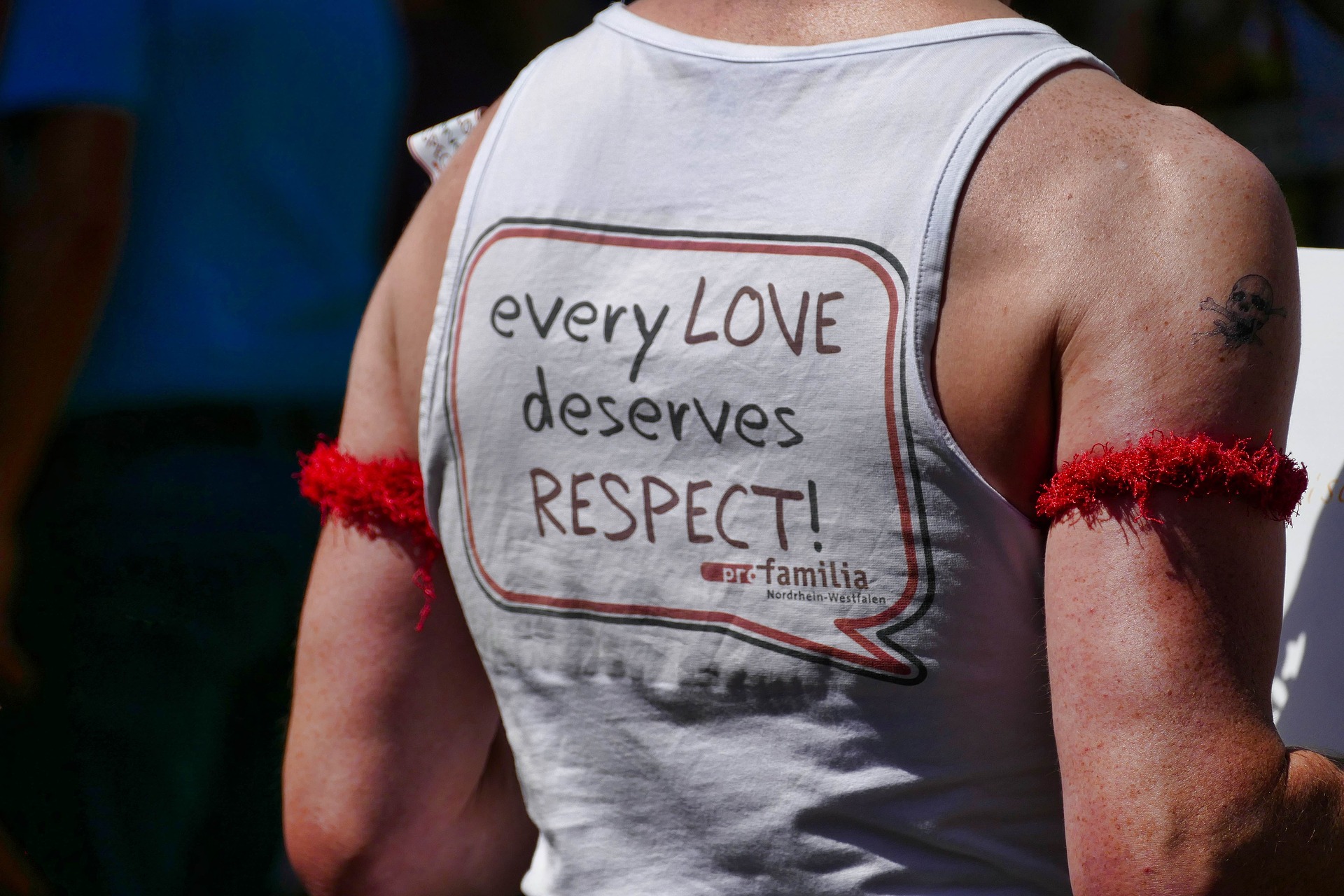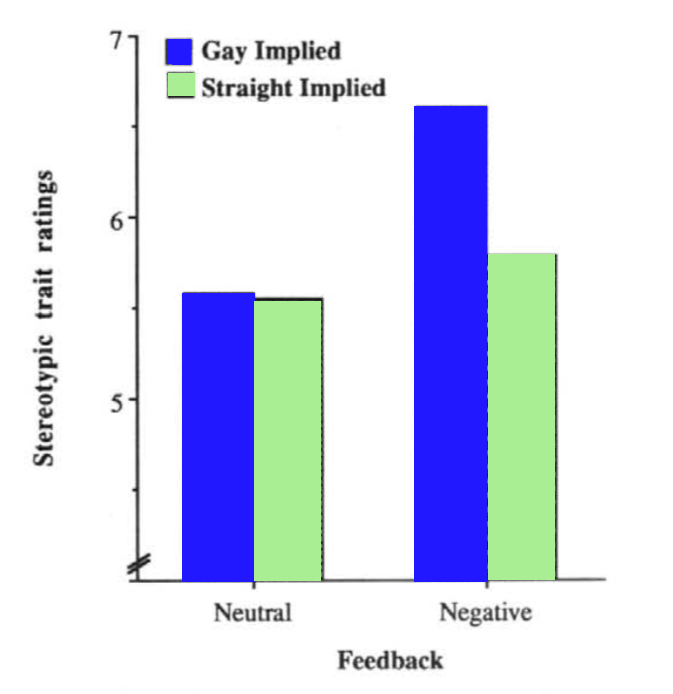Fein and Spencer (1997)
 The cognitive approach to stereotyping and prejudice argues that we have a tendency toward stereotyping and prejudice when our own sense of self is threatened. According to this model, prejudice stems, in part, from the motivation to maintain a feeling of self-worth and integrity through the negative evaluation of others. The study below by Fein and Spencer wanted to see if stereotyping and prejudice would increase when a group of men had their self-image challenged by scores on an intelligence test.
The cognitive approach to stereotyping and prejudice argues that we have a tendency toward stereotyping and prejudice when our own sense of self is threatened. According to this model, prejudice stems, in part, from the motivation to maintain a feeling of self-worth and integrity through the negative evaluation of others. The study below by Fein and Spencer wanted to see if stereotyping and prejudice would increase when a group of men had their self-image challenged by scores on an intelligence test.
Cognitive theoriests argue that prejudice is a response to "threatened egotism." This is when our own perception of our self is threatened and then we act out against an "other." This can be a form of scapegoating or a displacemet of aggression.
This theory is similar to the Freudian concept of "projection" - when the ego defends itself against unconscious qualities (both positive and negative) by denying their existence in themselves while attibuting them to others. Freud postulated that if a young man was bullying gay men - or men that they thought were gay - then, in reality, that young man was actually gay, but unable to cope with it. This led to acting out against other men.
The modern cognitive theory, however, does not argue that the reason for acting out against gay men is because the man is gay himself, but rather, that his sense of self has been challenged. For example, if a male's sense of maculinity has been challenged (for example, he was insulted by a beautiful woman), then the threatened sense of self may lead to prejudice and discimination against an out group - in this case, gay men.
It is important to note that this theory does not argue that people who stereotype and have feelings of prejudice have low self-esteem; in fact, it is just the opposite. This happens most frequently when one has a strong sense of self and that sense of self is challenged.
The sample consisted of 61 male introductory psychology students from Williams College. Each participant came to the lab independently and did not interact with other participants. Participants were randomly allocated to either the control condition or the negative feedback condition.
All participants were asked to take an online test called "The Reasoning and Verbal Acuity Battery." The test was a made-up test with questions that were not always possible to answer. The control group was told that this was a fake intelligence test and the test condition was led to believe that this was a true test of intelligence. The "negative feedback" group received low scores on the test. Considering that the students had high SAT scores to enter the university, this was seen as very disappointing by the students.
The participants were then asked to take a "social judgement task." The participants were given one of two scenarios. Both scenarios were about a 31-year-old male named Greg who is a struggling artist in the East Village in New York City. The scenario summarized his career struggles and how he has finally received a large part in a play. Greg invites the director out for a drink to discuss the play. It concludes with Greg's hopes to write a play of his own in the future.
Scenario 1 began with "Greg has been living with his girlfriend, Anne, in a small apartment. In Scenario 2, the word "partner" was used and there was no name given. The goal was to make it appear in scenario 2 that Greg may be a gay male.
After reading the scenario, participants were asked to fill in a questionnaire about Greg's personality, rating traits on a scale of 0 (not at all) to 10 (extremely). Three traits were generic traits; seven were stereotypical of gay men (e.g. femininity, creative, sensitive). They were also asked if they would like Greg as a friend and to what extent they thought they were similar to Greg.

The researchers found that participants who had received negative feedback on the intelligence test rated the "gay implied" man more stereotypically than did the participants who did not receive feedback. They also rated themselves as less likely to "like" Gregg or what to be his friend than those in the neutral condition - regardless whether he was "gay implied" or "straight implied." However, the dislike was strongest in the "gay implied" condition.
The researchers used a pilot group where they labeled Greg as either a "gay male" or a "straight male." The participants became suspicious that the study was investigating stereotypes about gay men. As a result, the researchers adopted the procedure outlined above. This was a strong control for demand characteristics.
The study is highly standardized and can be replicated to establish reliability. The procedure also has good internal validity.
The study is rather artificial, meaning that the ecological validity is low. It is not clear that this how the participants would react in a real situation.
It is an assumption in this study that the men had strong self-image because they are students at a competitive university. This may be a false assumption. Although the study has good internal validity, there could be previous experience with gay men that has not been accounted for in the study. As only 15 men would have been allocated to the "negative feedback + gay implied condition", participant variability in the independent samples design may lead to the difference in results.

 IB Docs (2) Team
IB Docs (2) Team
